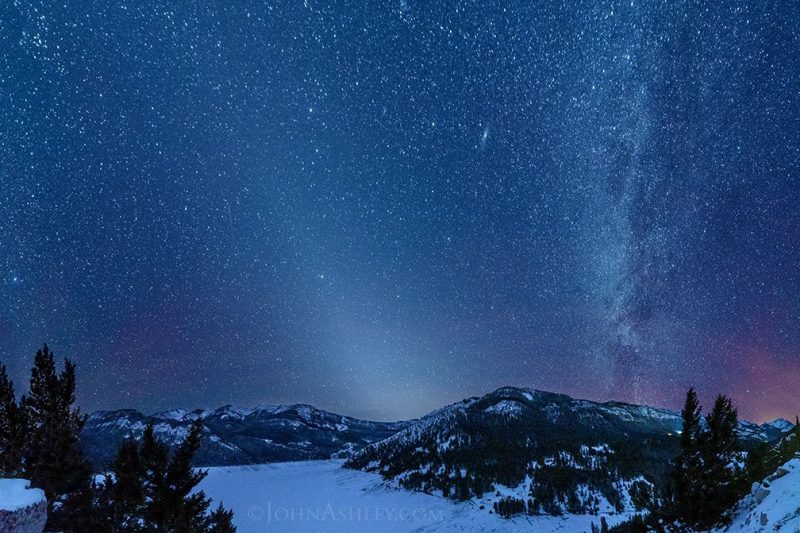Top image: Mike Lewinski in Tres Piedras, New Mexico, caught the zodiacal light after sunset as early as January 27, 2019.
The moonless evenings around the spring equinox are best for viewing the zodiacal light after sunset. Now that the moon has left the early evening sky, the next several weeks present an excellent time for those in the Northern Hemisphere to view this mysterious light, which looks like a hazy pyramid extending up from the western horizon, when all traces of twilight have let the evening sky. You’ll want a rural location, as full darkness falls. About 80 to 120 minutes after sunset should be about right.
Southern Hemisphere? It’s your best time of year to see the zodiacal light in the morning, in the east just before dawn. A bright moon is up before dawn right now. If you’re in the Southern Hemisphere, consider waiting until April 10 or so – when the moon has waned to a thin crescent or left the morning sky entirely – to look for the zodiacal light before dawn.
This observation is not for city dwellers. But if you find yourself beneath a dark country sky – or perhaps driving along a country road when the time is right – look for this eerie light.
Enjoying EarthSky so far? Sign up for our free daily newsletter today!

The zodiacal light is caused by sunlight reflecting off interplanetary dust particles that orbit the sun within the inner solar system.
People at mid-northern latitudes can see the zodiacal light after dusk at present because the ecliptic – the approximate plane of the solar system – is nearly perpendicular to the horizon on March/April evenings.
At this time of year, evening watchers see the zodiacal light jutting upward from the western horizon and toward the constellation Taurus the Bull. Taurus can be identified by its two most prominent signposts, the star Aldebaran and the Pleiades star cluster.

So for the elusive zodiacal light – pointing upwards into Taurus – look in the western sky, as dusk gives way to nightfall (about 80 to 120 minutes after sunset) these next few weeks.
Bottom line: The zodiacal light is a pyramid-shaped light. It’s in the west after true darkness falls for the Northern Hemisphere (east before dawn for the Southern Hemisphere) around the March equinox.
EarthSky astronomy kits are perfect for beginners. Order today from the EarthSky store











